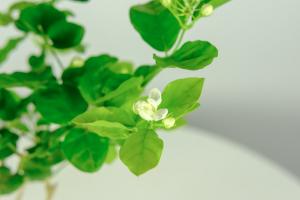How to Water Newly Planted Perennials
Perennials are a great addition to any garden. They come in a wide range of colors and sizes and can survive for many years if they are cared for properly. Watering is one of the most important aspects of caring for newly planted perennials. Here are some tips on how to water your perennials:
Choose the Right Time to Water
Watering perennials at the right time is crucial to their health. The best time to water is early in the morning or late in the evening when the sun is not too strong. This will reduce evaporation and ensure that the water reaches the roots of the plants. Avoid watering during the hottest part of the day because the water will evaporate quickly and will not be able to reach the roots.
Water Deeply but Infrequently
It is important to water your perennials deeply but infrequently. This means that you should water them until the soil is moist but not soggy. Then wait until the soil dries out before watering again. This will encourage the plant's roots to grow deeper into the soil in search of water, making them more hardy and resistant to drought.
Use the Right Amount of Water
It is important to use the right amount of water when watering your perennials. You want to avoid overwatering, which can cause the roots to rot, but you also want to avoid underwatering, which can cause the plant to wilt and die. The amount of water you need will depend on the size of the plant, the soil type, and the weather conditions. A good rule of thumb is to water until the top 1-2 inches of soil are moist.
Water at the Base of the Plant
When watering your perennials, it is best to water at the base of the plant rather than from overhead. This will ensure that the water reaches the roots and does not evaporate from the leaves. It will also reduce the risk of fungal diseases that can be caused by water sitting on the leaves for extended periods of time.
Consider Drip Irrigation
If you have a large garden or many perennials, you may want to consider installing a drip irrigation system. This will allow you to water your plants automatically and will ensure that the water reaches the roots of the plants without wasting water. Drip irrigation is also beneficial because it reduces the risk of fungal diseases by keeping the leaves of the plants dry.
Conclusion
Watering newly planted perennials is essential for their growth and health. By watering at the right time, using the right amount of water, and watering at the base of the plant, you can help your perennials thrive. Consider drip irrigation if you have a large garden or many perennials. With proper watering, your perennials will provide beauty and enjoyment for many years to come.

 how many times do yo...
how many times do yo... how many planted tre...
how many planted tre... how many pine trees ...
how many pine trees ... how many pecan trees...
how many pecan trees... how many plants comp...
how many plants comp... how many plants can ...
how many plants can ... how many plants and ...
how many plants and ... how many pepper plan...
how many pepper plan...































